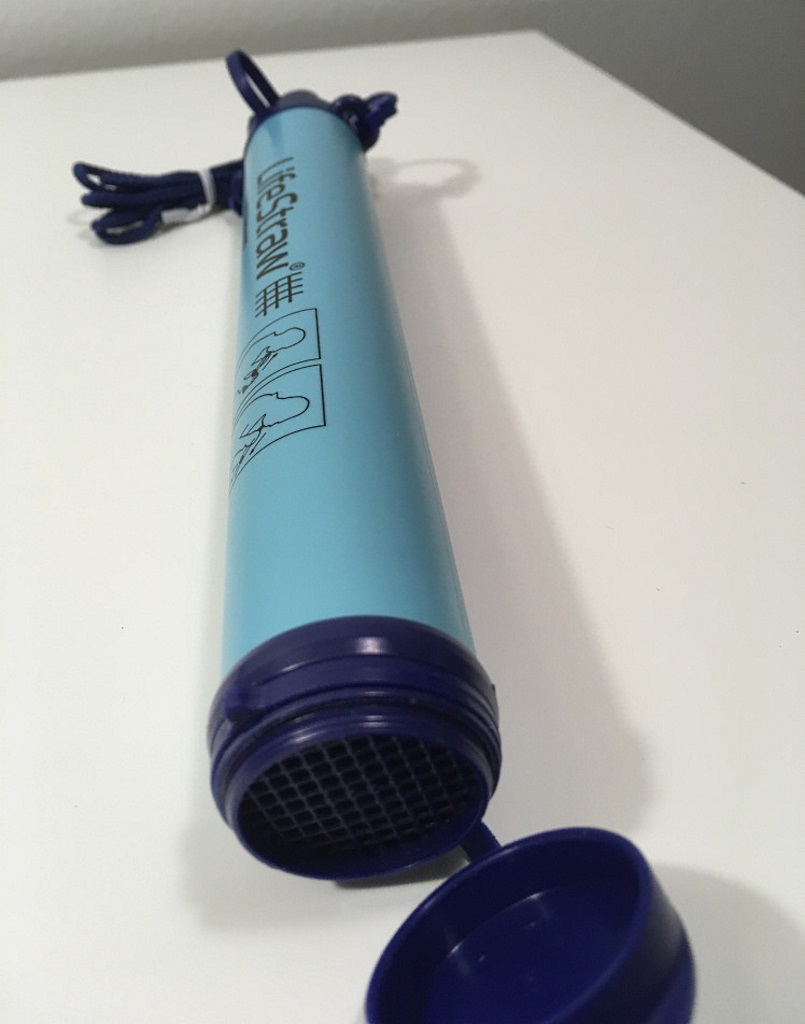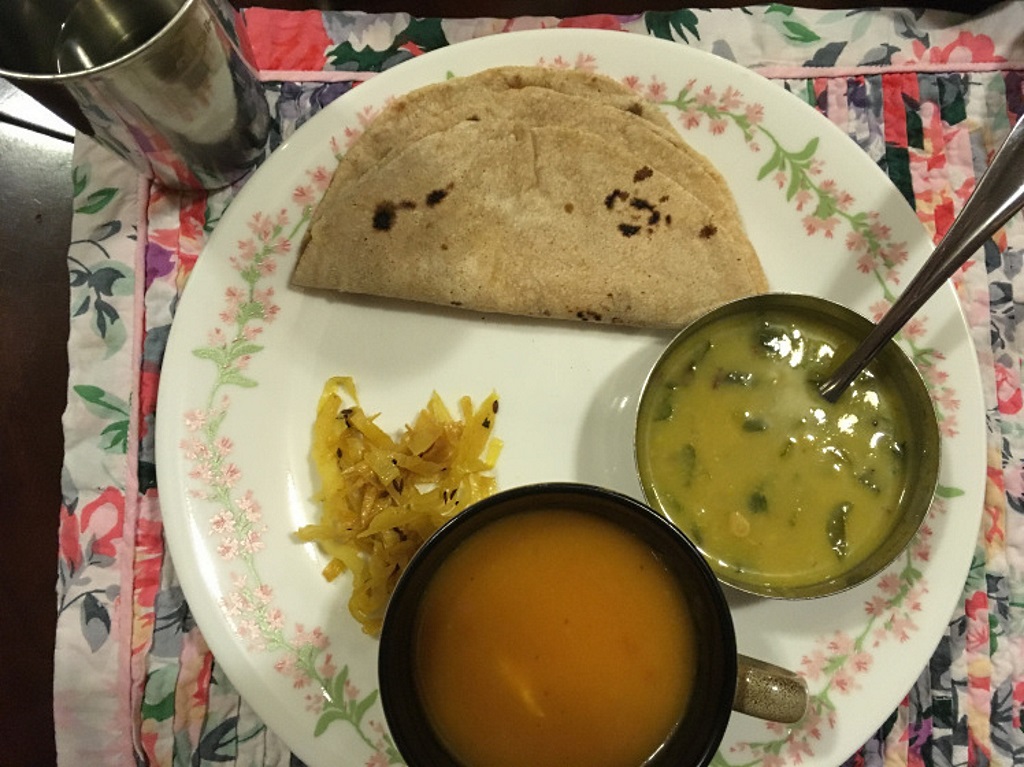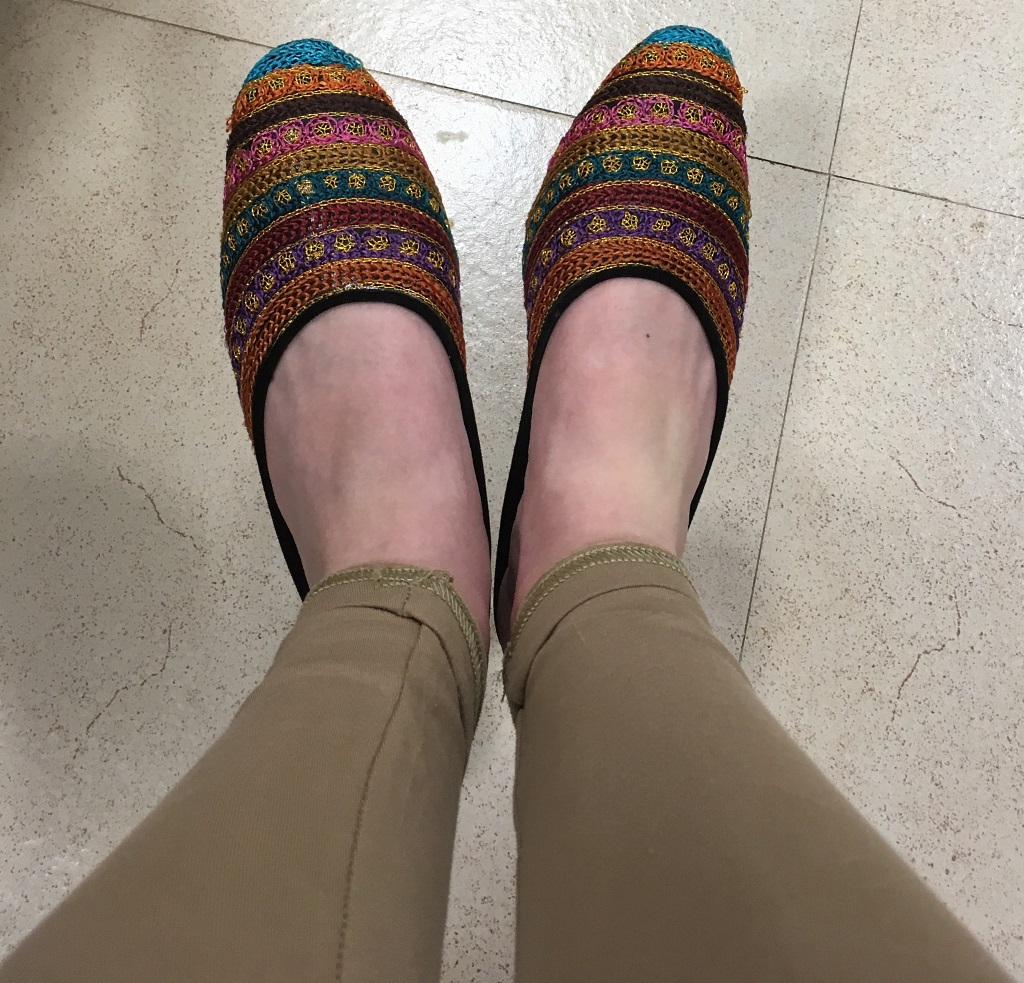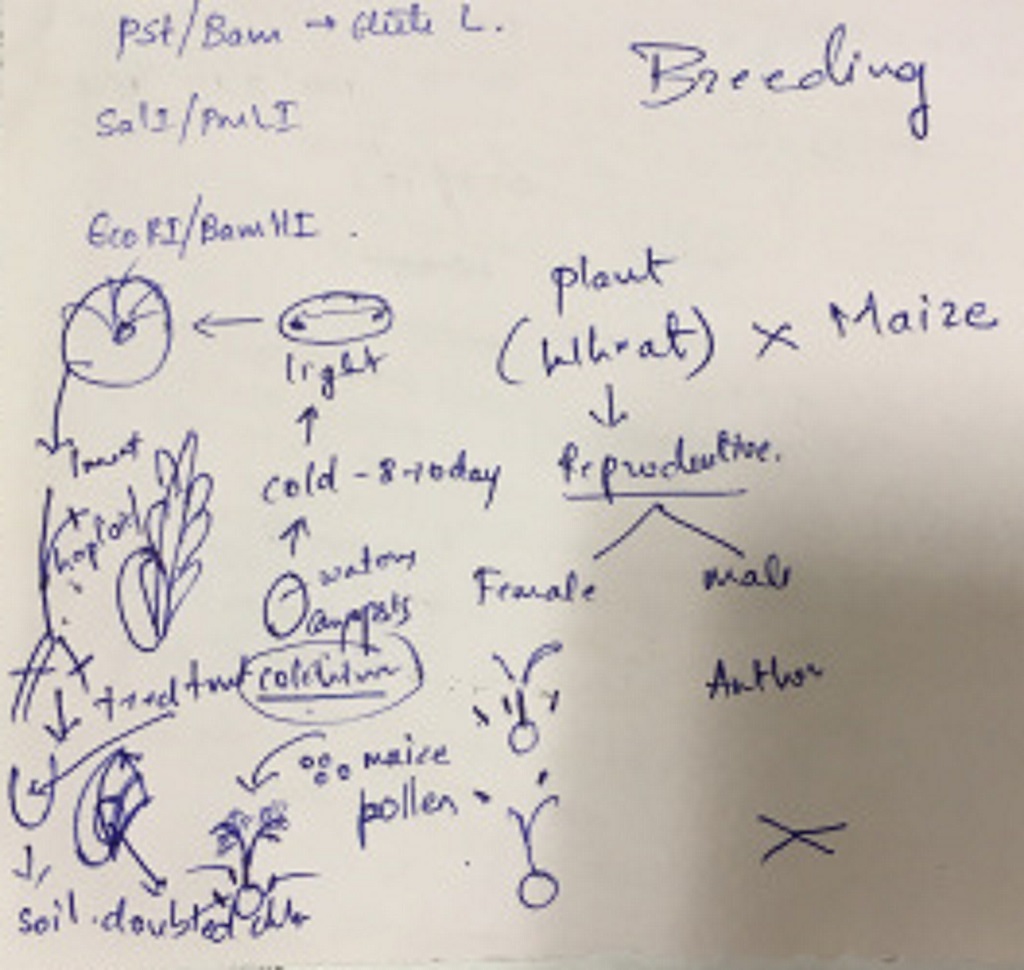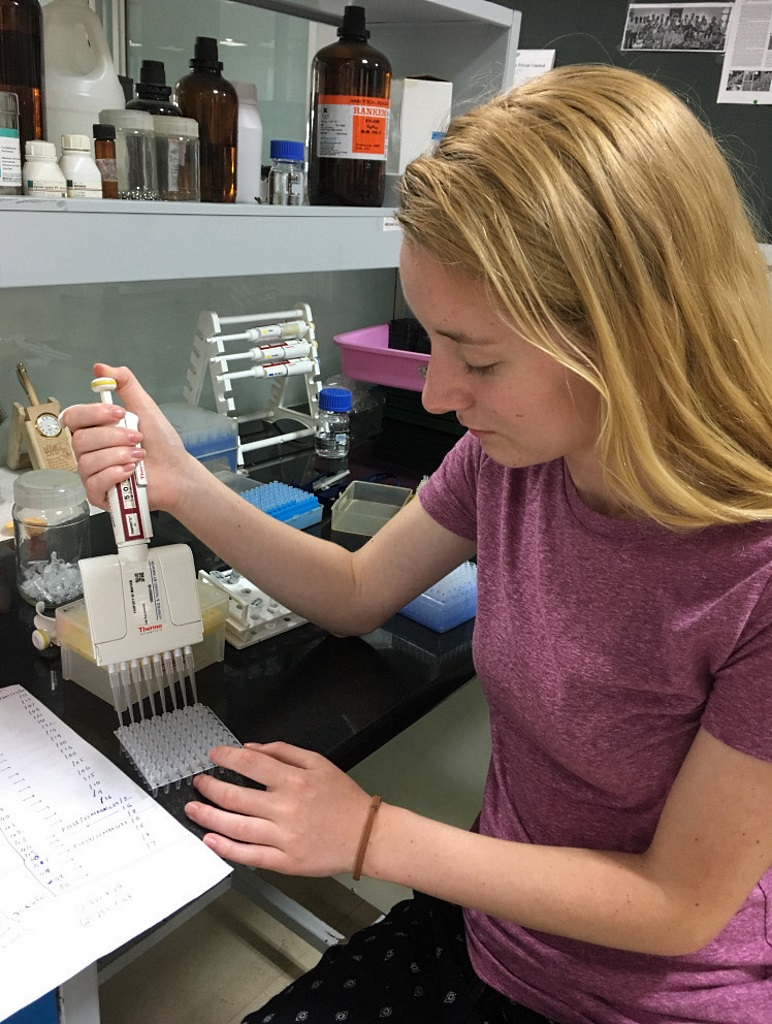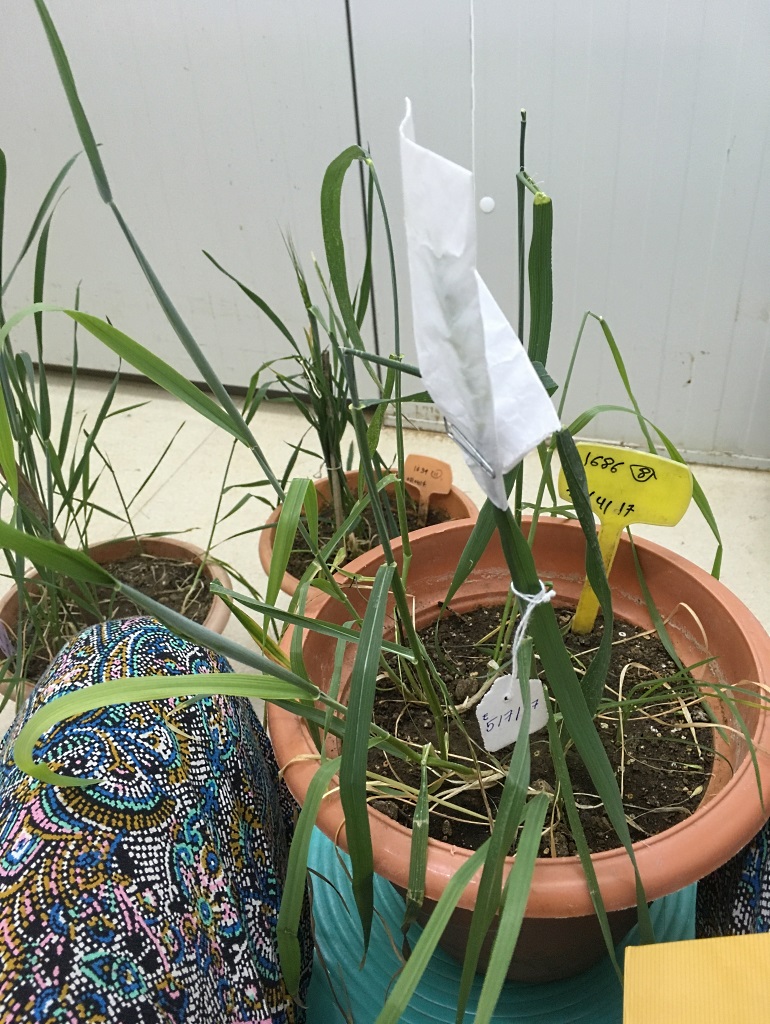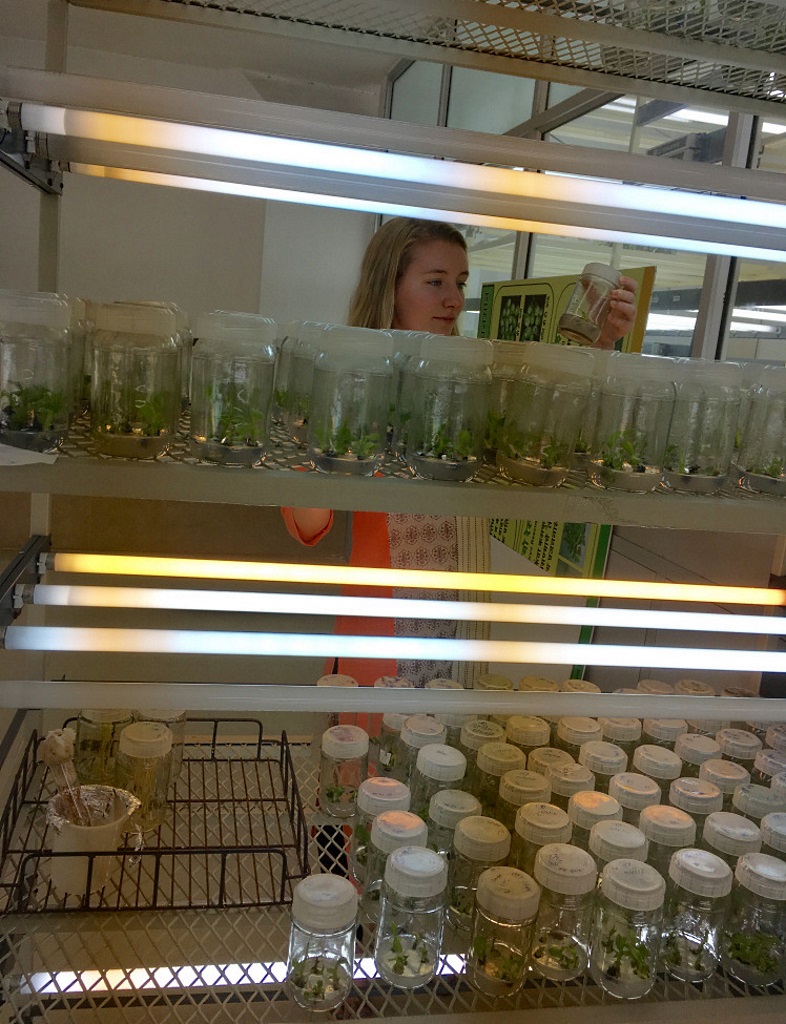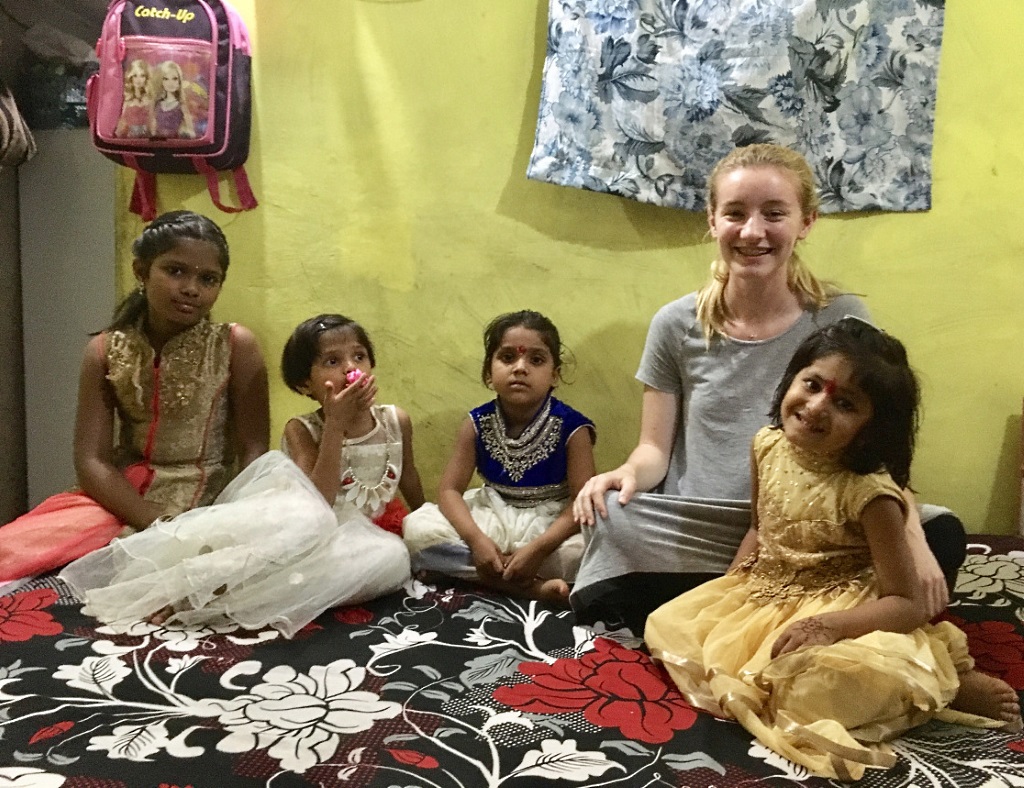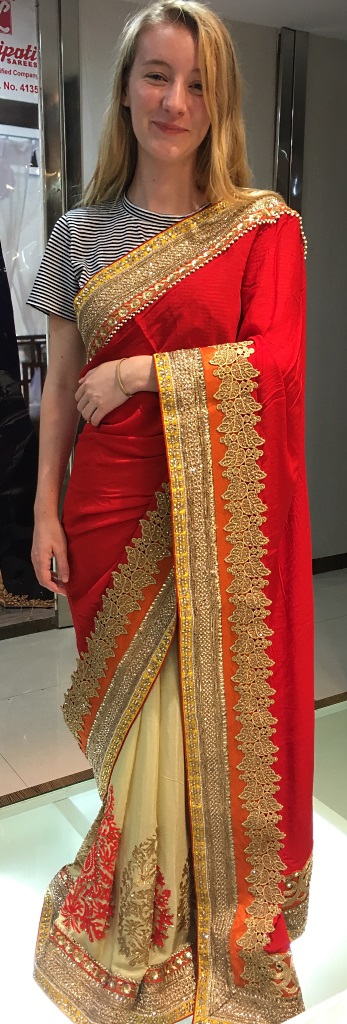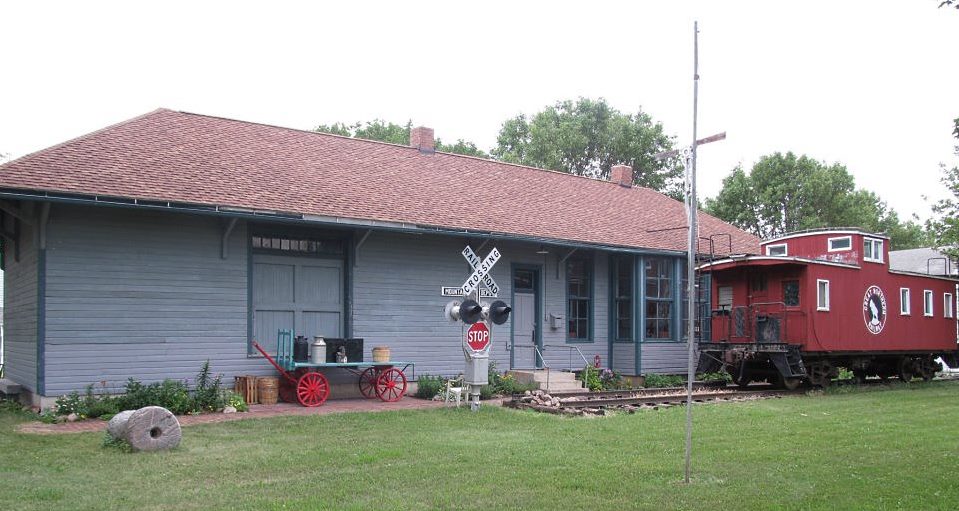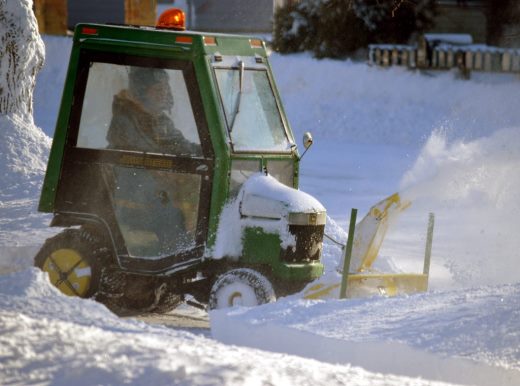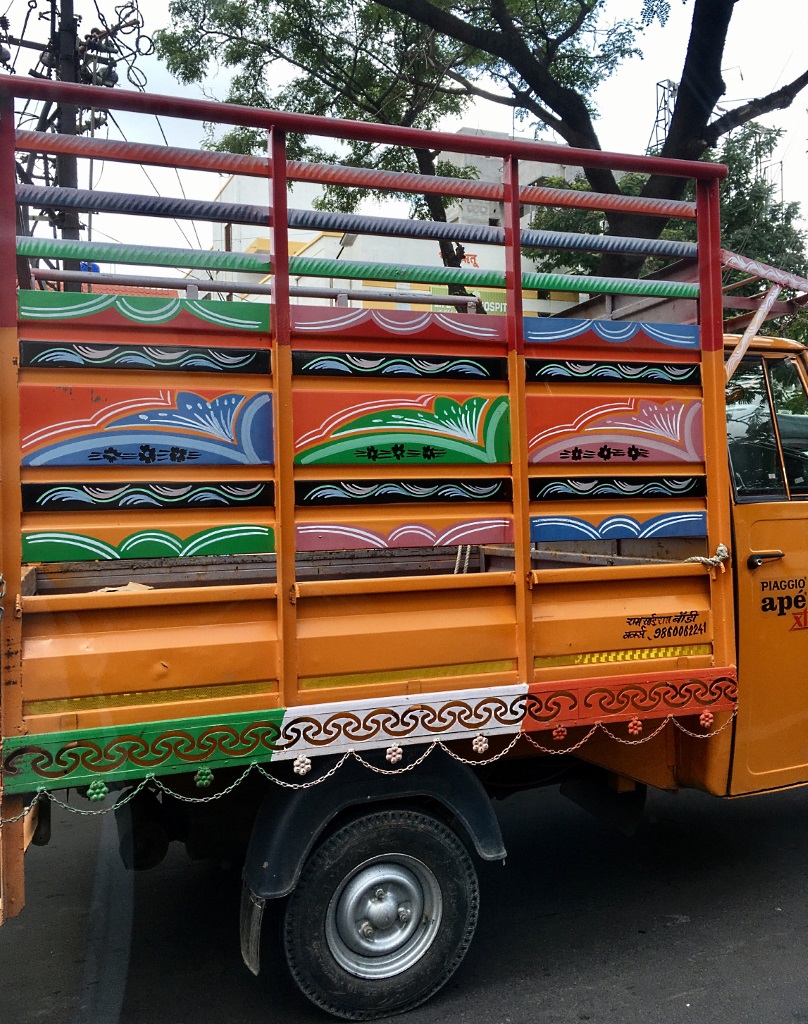Rebekah Klassen’s eight weeks during Borlaug-Ruan Internship
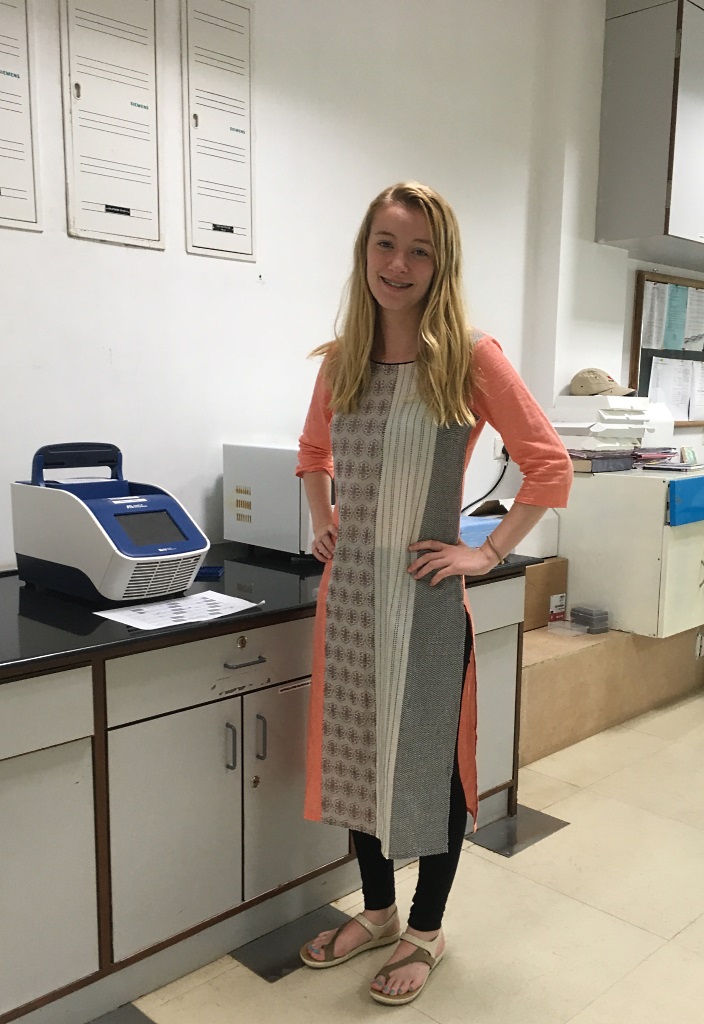
“What I Did This Summer”
For students returning to school in the fall following a summer break, that is often the title of their first paper of the year.
For summer 2017, 18-year-old Rebekah Klassen of Mountain Lake has – hands down – the ultimate summer “vacation” story to tell.
Rebekah, daughter of Chad and Esther Klassen, and a May 2017 graduate of Mountain Lake Public High School, recently completed an eight-week fellowship inside India through a Borlaug-Ruan Internship experience. Following a whirlwind turnaround of mere days, including a sweet, speedy swing through Mountain Lake and a vacation with her family, the young woman is off on another adventure – her first year of college at the University of Northwestern in St. Paul.
Over the course of her time in the South Asian country, Rebekah shared a personal narrative of her observations, anecdotes and thoughts, journaling via the Word Press blog, “Into India” (www.intoindiasite.wordpress.com).
Here are her reflections.
Reality of India internship comes into focus
“Waaaay back as a sophomore, my agriculture instructor Mrs. (Lindsey) Brockberg suggested that I look into the Minnesota Youth Institute,” Rebekah explains. In order to participate, students were required to initially write an extensive research paper about a current problem that causes food insecurity and possible solutions. Because Rebekah had already written a speech on hunger in India, she delved deeper into an investigation of the effects of limited Indian women’s education on food insecurity, poverty and agriculture. Remembers Rebekah, “As I researched, the stories and statistics broke my heart, and challenged the way I view the world.”
After presenting at the Minnesota Youth Institute as a a junior in spring 2016, she qualified for the Global Youth Institute, held in mid-October in Des Moines Iowa. “In the fall of my senior year,” Rebekah lays out, “I attended the three-day Global Youth Institute hosted by the World Food Prize Foundation, along with 400 other high school students and teachers from around the world with Mrs. Brockberg. At the event, I met outstanding individuals and listened to and participated in seminars and symposium discussions led by leaders, experts, business executives and researchers from around the globe.”
In addition, she presented her research paper on a critical aspect of food security. The focus of her paper was on India and the hunger pangs of its people.
Rebekah lays out. “To me, revamping their ag system and providing education, in order to provide food security – with safe food – food without rotting and disease, is the real transformation needed.
“Those three days at the Global Youth Institute absolutely changed my view of food. I learned how agriculture is on the cutting edge of solving the world’s most daunting problem – global food insecurity.”
Every student who is a part of the Global Youth Institute has the opportunity to apply for the Borlaug-Ruan Internship – named after the late Dr. Norman Borlaug, a University of Minnesota-Twin Cities professor, leader of the “Green Revolution” for agriculture, a Nobel Peace Prize Winner and founder of the World Food Prize and the late John Ruan Sr., former Chairman and CEO (Chief Executive Officer) of The Ruan Companies and former Chairman Emeritus of the World Food Prize. In early December 2016, Rebekah applied, was interviewed, accepted – and the rest is now history.
The Borlaug-Ruan Internship is an eight-week internship available to students who have participated in the Global Youth Institute. Interns choose from several research facilities around the world. The Borlaug-Ruan Internship is a youth program of the World Food Prize. This phenomenal organization recognizes leaders all over the world for improving the quantity, quality, and availability of food everywhere.
Continues Rebekah, “For my internship, I was placed at a seed company in India where I helped the company improve the quality of several types of seeds. While there, I conducted a research project of my choice and wrote a paper concluding my findings.
“I was thrilled to part of this program, and had the opportunity to be a hands-on part of fighting hunger. For the last few years, I wanted so badly to improve agriculture and education to decrease food insecurity. But, sometimes I felt as if I was only watching from the sidelines. On this internship, I was able to get my hands dirty, and contribute to the research that I have read so avidly.”
Above and beyond that, Rebekah was able to fully immerse herself in another culture. Everything was completely new to her senses – the music, the smells, the sights. After investing so much of herself into this country pre-visit, Rebekah finally had the opportunity able to step on Indian soil, work alongside Indian researchers – and eat Indian food!
Now that she has returned to the United States, Rebekah will at some point be presenting the research from her internship to sponsors, students and researchers.
A day at work, at home in India

Inside India, Rebekah lived and worked from mid-June to mid-August in the state of Maharashtra – located on India’s western cost – in Jalna, a city with a population of 200,000, located in the Jalna District. Local weather during those two months featured 90+-degree days – and monsoon season. Mumbai, west of Jalna, is situated along the Arabian Sea coastline. It is the state’s capital city – and the most populous city in India.
While in Jalna, her internship experiences were with Mahyco, a seed company that has been, according to their website, “sowing the seeds of change in Indian agriculture for the past 53 years.”
Mahyco (Maharashtra Hybrid Seeds Company Private Limited) is the first company in India to introduce hybrid seeds in many crops, including several vegetable crops. As the pioneer in seed technology, Mahyco has transformed the country’s agricultural landscape and helped the farmers improve crop productivities. Driven by the belief that farming challenges can be addressed only by science-led innovations, Mahyco is on a mission to make India not only self-sufficient in food production, but also a major global exporter of agricultural produce.
The focus of Mahyco is on research and development, production, processing and marketing of seeds for India’s farming fraternity.
Mahyco was founded in 1964 by Padma Bhushan and 1998 World Food Prize awardee, Dr. B. R. Barwale. Dr. Barwale’s legacy and vision have earned him recognition as “The Father of the Seed Industry in India.” At Mahyco, Rebekah’s supervisor was Dr. Char, but she also spent a couple weeks with Dr.Barwale’s daughter, Dr. Usha Barwale Zehr. She will also had a designated mentor, Neelam, during her time “into India.”
In her host home, wildlife was a part of everyday life. “Every morning, I could locate at least one gecko inside the house. These tiny crawlers can be found everywhere in India and help keep the mosquito population in check,” Rebekah expands on that fact.
“And, if I listened carefully, I could also hear the wild peacocks call to each other. After just a week, I could accurately distinguish a peacock’s call from the other birds who clamor for attention. As a native Minnesotan, I was pretty proud of my new, yet slightly useless talent.”
The workday at the seed company began around 9 a.m. “I worked in the labs of a seed company that focuses on improving crops,” explains Rebekah. “On my first day in the lab, everything was completely over my head. While I have just finished high school, these researchers have completed their bachelor of science degrees, often their masters – and even their PhDs in a lot of cases.”
Each weekday, Rebekah spent three-to-nine hours in the tissue culture lab, depending on if she worked in the greenhouse – or visited a school at which helped. In the tissue culture lab, Rebekah worked through the double haploid method – the focus of her research project. The double haploid method prevents self-pollination in order to create a seed that is haploid, then uses colchicine to double the chromosomes. This method is used to preserve a desired trait in the next generation – and accelerate the plant breeding process.
Most days, her work included:
- Emasculating or pollinating in the greenhouse.
- Removing caryopsis (contains the embryo that will develop into a seed).
- Sterilizing caryopsis.
- Rescuing embryos (this means that I split the caryopsis in half under a microscope to pull out the tiny embryo).
- Preparing media for the tiny embryos to grow on.
- Writing her internship paper.
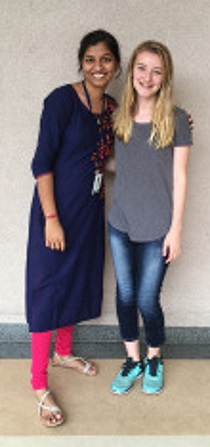
In addition, Rebekah assisted Neelam with a few of her projects and also worked on a DNA extraction project. DNA – deoxyribonucleic acid- is a molecule that carries the genetic instructions used in the growth, development, functioning and reproduction of all known living organisms and many viruses.
Rebekah admits that, “At first, I really struggled to understand the scientists because they used giant, scientific words and have thick accents. Often my supervisor had to re-explain concepts using pictures and flow-charts because I could not differentiate between what was a new word and what was just their accent.
“For example, my supervisor tried to explain plant breeding by saying that they put the ‘boller’ on the wheat. After she drew a picture of the whole process, I learned that she was just explaining pollen.”
Once Rebekah actually began doing the procedures with her own hands, she shares, she was able to catch on. In only one week, Rebekah learned and executed at least 10 new procedures that are used in the molecular analysis process. Another week, she concentrated on plant transformation – and got her very own white lab coat.
“On my first day, I could not understand anything Neelam was saying to me, I had no idea how to use a pipet, and I had never even heard of the double haploid method. Now I can tell you the whole process by memory,” extols Rebekah with well-deserved pride.
She also noted that, at work, the other ladies were incredibly inclusive. At first Rebekah was afraid to wear traditional Indian clothing in fear that she would offend them because she is not Indian. But when she came to work in leggings and a green kurta, they were excited to see her adopting their culture.
Instead of speaking in English to each other, they continued to speak in their native Hindi. States Rebekah, “I am so glad that they did not change for my sake because this helped me in my process of learning Hindi.”
After working for an hour, most of the workers took tea. The tea breaks were brief, but were also a great opportunity for Rebekah to improve her Hindi. Every day the lab ladies taught her a new word or phrase.
According to Rebekah, the culture in Maharashtra reflects British culture in many regards. For example, they drive on the left side of the road, spell color as “colour” and take breaks for tea.
An hour or two after lunch (which ranged from chicken and potatoes to curry and chapati – commonly called roti (flatbread of stoneground wholemeal flour) – as well as a bowl of dal (soups prepared from lentils, peas, and beans; no Indian meal is complete without it), it was time for another break for tea.
At 5:30 p.m., the workday ended. Most of the workers headed towards the waiting buses that took them to the nearest villages, while Rebekah walked home down a street lined with flowering plants and palm trees.
In India, supper does not start until 8 p.m.; 7:30 p.m. at the earliest. Often, restaurants will not even open until 7:30 p.m.
According to Rebekah, evenings were wonderful for walks around the campus. Before the sun sets, the wild peacocks come out of hiding. “While I was never able to get close enough to get a picture, I saw plenty of these magnificent birds running across the campus,” says Rebekah.
“With the high humidity and only a whisper of wind, the air is heavy, but peaceful. When the rain starts, it is softly. However, in a matter of minutes, the gentle rain turns into a colossal downpour, turning a peaceful evening into a classic monsoon scene.
“I typically fell asleep to the soft whir of the air conditioning and the calls of a hundred Indian birds.”
School days
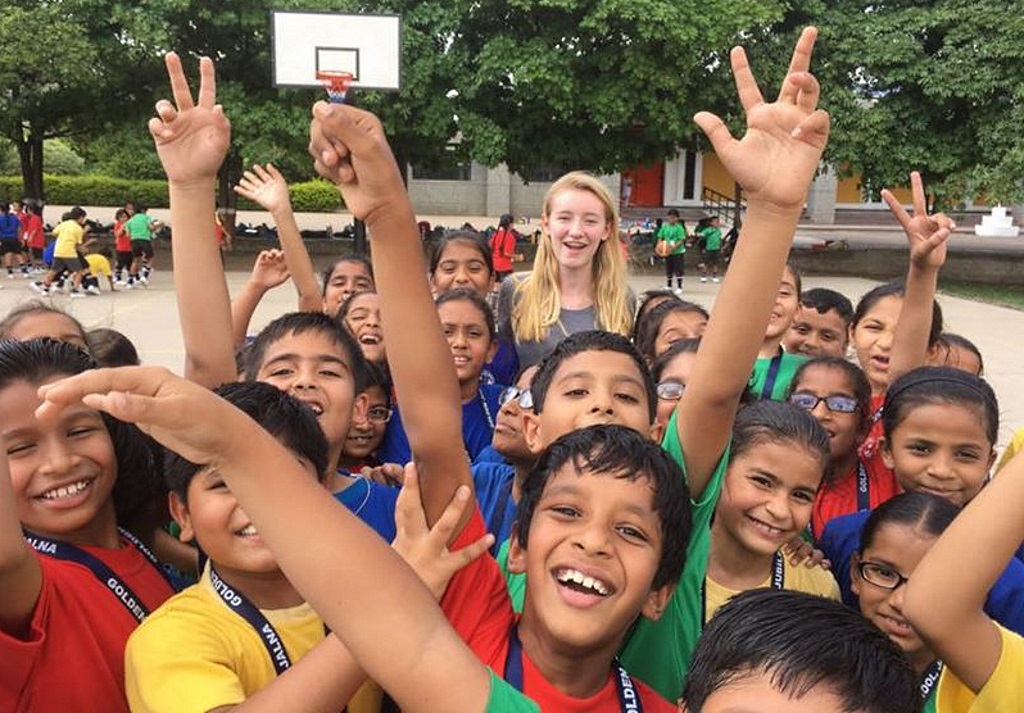
Early on, Rebekah visited a school in a nearby village because she is interested in exploring a career as an ESL (English As A Second Language) teacher. “I loved my time with the little three- and four-year-olds, so I decided to regularly help with classes at another nearby private school when I’m not in the tissue culture lab, the greenhouse or working on the DNA project,” tells Rebekah. School started the second week of June, before she arrived in India.
In the mornings, she assisted in the nursery and kindergarten classrooms. For these Indian children, school typically starts when they are three-years-old. In nursery (the earliest grade level), the children sing, play, dance and explore with their friends for two hours each day.
Because these children may speak Hindi, Marathi or another regional dialect in their homes, nursery is primarily for teaching the little ones English. Nursery also helps children become accustomed to school, their teachers and their peers.
Reflects Rebekah, “Even at this young age, children are taught an incredible amount of respect. When the nursery teacher – in her bright red kurta and matching rosy lipstick – called out a name, the name’s owner – a tiny girl with a head full of tossed curls – quickly answered, ‘Yes, ma’am?””
After nursery, she visited upper and lower kindergarten grades. Lower kindergarten was difficult for her because the children were starting to do organized learning, yet still cannot fully speak English or differentiate between speaking English and their mother tongue. For the most part, Rebekah helped with her favorite activity – coloring.
Lunch was also an organized and coordinated event. Food is served family-style with teachers dishing out the main course to the students at their table.
Unlike the typical school cafeteria, manners are intensely regulated in this “canteen” (the Indian word for cafeteria).
A third-grader, after watching Rebekah’s blunders, “politely coached me through the proper way to eat,” she shares. ‘No, ma’am, like this . . . We must use both the spoon and fork, ma’am . . . Ma’am, the roti (flatbread tortillas) needs to stay on the plate.’”
After lunch, she shadowed the elementary or high school teachers. Classes are structured in a similar manner to western classes, but students stand when called on to give their answers.
As part of her time spent in the school, Rebekah notes that often curious elementary students stopped to ask the “paler-than-a-piece-of-paper girl some questions. Typically, they asked my name and home country. But I was asked several unique questions. These are my favorites:
- ‘Ma’am, what are those?’ (pointing to my freckles)
- ‘Ma’am, why are Americans so disrespectful to their elders?’
- ‘Ma’am, have you heard of Poland?’
- ‘Ma’am, what are your relations?’ (asking about my family)
- ‘Ma’am, do all Americans have yellow hair like you?’
- ;Ma’am, what is America’s national flower?’
- ‘Ma’am, why is your skin so fair and pale?’
“Occasionally, the girls would offer compliments with their questions. One girl paused in the hallway to say, ‘You are looking well today, ma’am.’ Another small second-grader gently petted my arm and sheepishly asserted me that my skin was ‘soooo soft.’
“Without a doubt, no matter how different, we are all humans with hopes and dreams and an abundance of questions.”
Cultural immersion
Living in the country with a native host family, Rebekah was quickly and easily immersed in the culture of her area.
Below are a couple of those experiences, merely a sliver of her learning curve.
+ Red dot – One of the first differences that any foreigner will notice in India is the red dot. Women, men, even children walk around with all sorts of dots in-between their eyebrows. Some groups of women would not wear dots, while some groups of women would wear bejeweled dots.
Her hostess, who was born and raised in India, explained how and why Indians have dots on their foreheads.
“To clarify the first misconception, they are not referred to as dots, they are called the tikki, tikka – bindi,” Rebekah explains.
Similar to a sticker, it is applied at the beginning of the day and can be peeled off at any time.
It is commonly assumed that it is a symbol of a woman’s marital status and religion. However; men, woman, and children wear it for a variety of reasons.
For Indian women today, it is worn as decoration, like make-up. Some women choose to go without while other women will not leave their house without a colorful dot gracing their foreheads.
Traditionally, it a simple red dot and nothing more. As time went by, it has evolved into a fashion statement. Modern appliques can be black, bejeweled or even other shapes.
For men, it is not for beautification, but rather indicates that they are devoted Hindus. Furthermore, dots on men are only a red, yellow/orange dot or streak on the forehead of sandalwood powder.
+ An Indian wedding – Rebekah and her host family traveled five hours to celebrate the host family’s niece’s wedding.
This wedding went on for full three days and was full of family, food – and henna.
When the travelers arrived, the “aunts” decided that Rebekah was not “fancy enough.” So out came the shiny boxes full of earrings, bracelets, and necklaces of every size and color. They selected a rose-pink, pearl necklace and a glittering silver watch to dress up her look. Then, they pulled out a yellow kurta (long shirt) with matching pants.
With the bride-to-be, all of the aunts, a few of the uncles, and all of the cousins loaded in vehicles, the entire group headed to a family restaurant to begin celebrating.
Unlike a typical restaurant, the majority of this restaurant sprawled into an open courtyard sheltered by dark green canvases. Several buffet tables stood on one side, filled with dishes of every spicy food imaginable.
After finishing lunch, they piled back into the cars and wove through the Indian traffic to the bride’s house. ”
“It was finally time for what I have been looking forward to my whole trip: henna,” shares Rebekah.
In India, henna is made from plants and used in celebrations. Artists draw intricate designs with this “plant ink” on all of the wedding party’s hands. In a few hours, the henna dries, cracks, and falls off the skin, but leaves behind a stain that can stay for one-to-two weeks.
Henna gives off heat and helps cool the body. Because the wedding days are considered stressful, the bride’s arms and feet are covered in henna two days before the wedding. Her henna will be the most intricate and take the most time (three-to-seven hours).
“When it was my turn, I could not contain my excitement! As I watched, this artist turned my palms into botanical gardens. I love the way it turned out,” proclaims Rebekah.
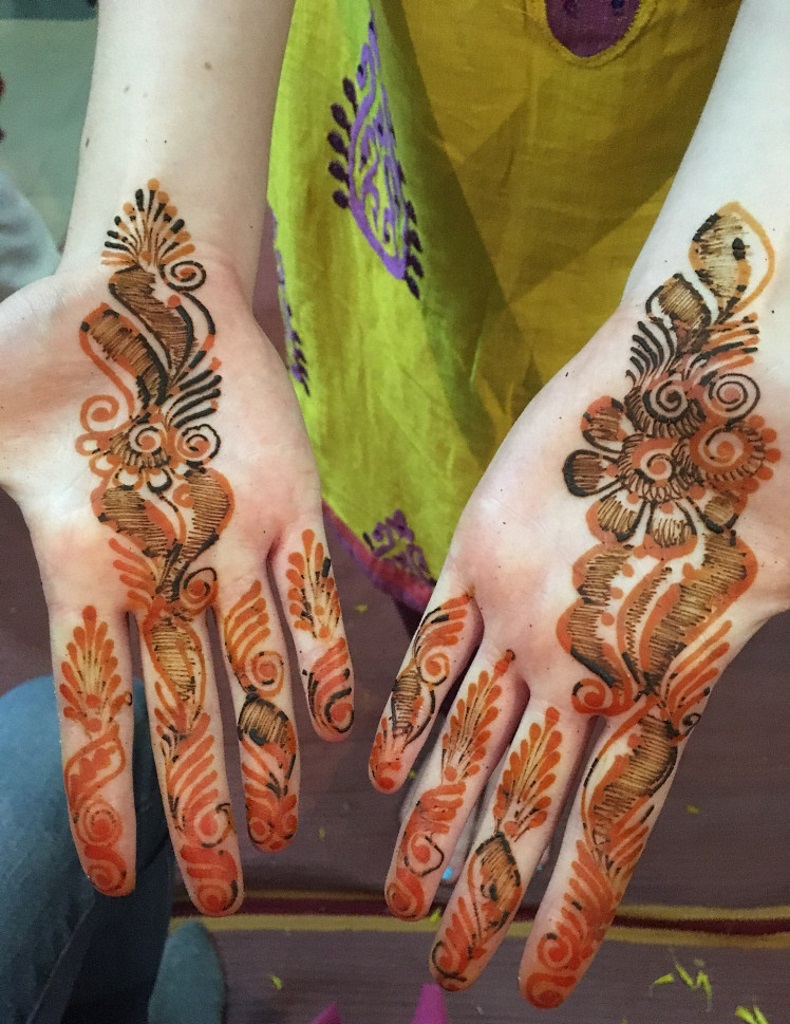
“While I was waiting for my henna to dry, I was ushered onto the patio by one of the aunts. A group of people had gathered around one man who I was introduced to as Tushar Gandhi. Yes . . . that Gandhi,” Rebekah exclaims.
“Sitting in a green, plastic chair right in front of me was the great-grandson of Mahatma Gandhi, the Father of India. For about 20 minutes, I got to talk with him about India, his great-grandfather – and even GMOs (genetically-modified organisms).”
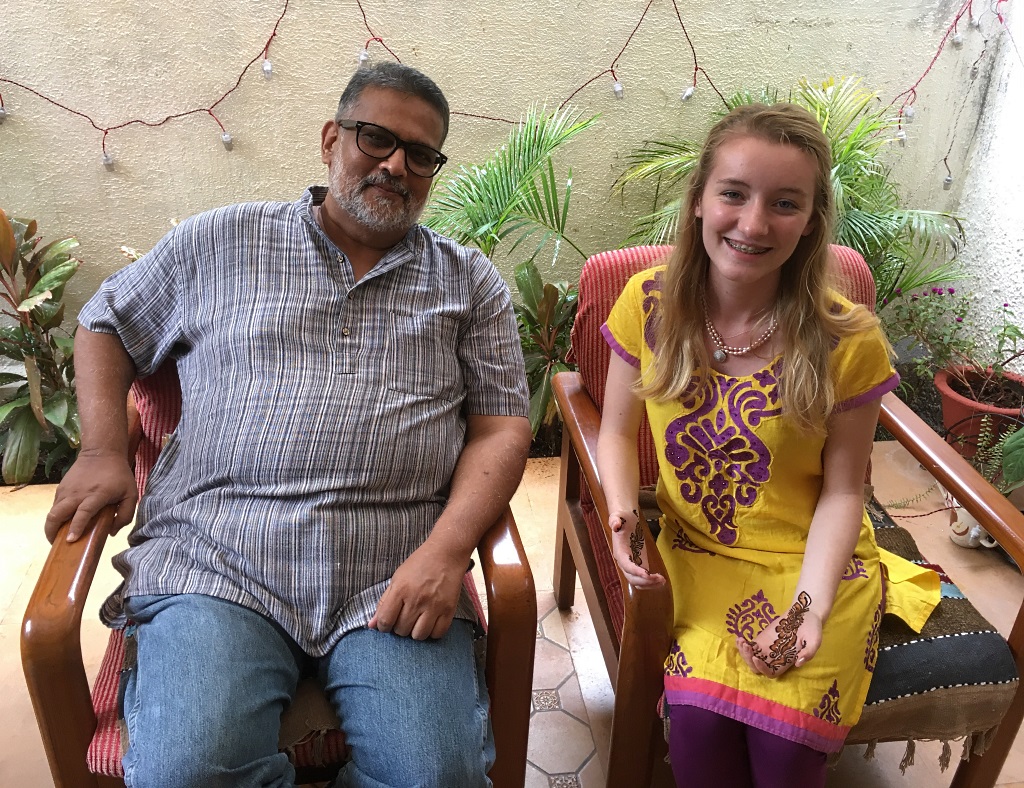
Meanwhile, back in the house, more and more people arrived.
Soon, a second henna artist arrived, someone flipped on some Bollywood music, and the party really started, with Rebekah taught some Indian dance moves.
The second day was coined the day of the dance and the “bridesmaids” were out in the courtyard early to practice their routine. After Rebekah watched for awhile, they insisted she join them.
“I have always admired Indian dance because it is so lively and energetic, yet mysterious and whimsical at the same time. As I learned, most of the moves are not as difficult as they seem,” says Rebekah.
Before the party, all the ladies prepared in typical Indian style – sparkly make-up, sparkly clothes, sparkly shoes and sparkly jewelry.
In the open cement hall, the night started with a few traditional Indian songs. After that, the wedding party danced to some modern Bollywood songs.
“Then, one of the girls told me to I was going to dance with them in the song that I had learned that morning,” Rebekah recalls. “Instantly, my heart pounded and my hands shook. Dance to a song I barely knew in front of so many people? No way!
“So, I danced. And I messed up. But that was okay because I had so much more fun than if I had simply watched. Even when I messed up, I have learned that stepping beyond what I am accustomed to is incredibly rewarding. But as this internship has taught me, I know that confidently going outside of my comfort zone can lead to some of the best growth and memories of my life.”
The third and final day of the celebration arrived – the official wedding day.
At the hotel, people were beginning to gather in the wedding hall. Rebekah and her group arrived more than a half-an-hour after the event was supposed to start, but no one seemed to mind. Because this was a court wedding, the ceremony was simple.
Rebekah describes the two-part wedding in detail. “In a striking orange sari, the bride glowed as she signed the documents. After the groom added his signature, everyone applauded and the couple was officially married.
“Next, the family preformed a traditional Hindu ceremony of blessing the couple before the photos began. For the next few hours, the bride and groom posed for photo after photo with every guest.
“Overall, this wedding was my favorite Indian event because I experienced so much of Indian culture. I learned how precious family is to the Indian people; I tasted a plethora of Indian cuisine; I even enjoyed dressing in traditional clothing. Without a doubt, I will carry the memories of these three days with me, even now that my internship is over.”
The challenges
Adjusting to a new time zone, adapting to a new culture and living without a church family, did, however put a strain on Rebekah’s body, mind and soul. Initially, her adrenaline kept her buoyed; “excited to be in a new place with wonderful people, fascinating labs and wild monkeys, that I failed to take care of myself,” Rebekah acknowledges.
In a matter of days, though, she was physically sick, mentally exhausted from lab days and confused about her purpose in India. “As I found out, 8,293 miles from home is a weird place to realize you don’t know who you are,” declares Rebekah.
After a week, she decided to be more intentional about her physical, mental and spiritual health. To do this, she outlined three goals to improve the health of her body (exercising, eating healthy, especially protein), mind (practicing Hindi – नमस्ते (namaste)- hello, हाँ (haan)- yes, आपका नाम क्या है (aapaka naam kya hai) – What is your name? and Spanish daily and soul (journaling every day).
Discoveries made during her tenure
The first personal discovery Rebekah made was that she is capable of learning so much – if she does not give up.
During her first week in the lab, nothing made much sense to her. All the words were cumbersome and scientific; all of the equipment was foreign; all of the concepts were new. Rebekah describes it as feeling as if she had been dropped off on another planet much more advanced and inhabited by geniuses who spoke a higher form of English – and wore colorful kurtas.
However, she did not give up on learning and spent extra time recopying Neelam’s notes and diagrams, reading articles and carefully following the experiment instructions. As a result, Rebekah came to understand the work and, in turn, was able to absorb more of the scientific conversations in the lab.
Second, she gained clarity on what type of work she really enjoys.
“During my extra time, I absolutely looked forward to writing; I was happiest and felt the most productive when I was working on my internship paper, my blog or prepared a report,” tells Rebekah. “In addition to writing, I have reaffirmed that I love organizing, scheduling, educating and planning. This knowledge has been invaluable as I’m continuing to look at possible majors for college. Now that I can see where I excel and what I enjoy, I have a clearer picture of what I might like for a future career.”
A wrecked life finds its purpose
Through it all, through shattered beliefs of what was important, Rebekah found her purpose.
As she explains, “This trip has wrecked my life; it has taken everything that I believed was important and shattered it. And this was one of the best experiences of my life.
“Being in India pushed me so far past what I thought was my limit. My heart was been broken over-and-over again. And yet, I wouldn’t have wanted to be anywhere else at that time.
“Through the process of temporarily losing everything – my family, my friends, even my health – I discovered what really matters. In that place of brokenness, I found something truly beautiful – purpose.
“By struggling to answer these questions, I learned so much about myself. I noticed that I love planning and writing and organizing; I enjoy being with people and learning about them; most importantly, I learned that I am always hopeful.
“From the other side of the world, overcoming poverty and food insecurity seems difficult, but doable. As I got close to these problems, I could see that those issues are incredibly complex – a giant spiderweb of inadequacies. These problems won’t be solved merely by money or force of will. Yes, those are pieces to the puzzle, but the real solutions will come from innovative ideas and people who never give up.
“So that’s where my purpose lies. I cannot change the world or solve any of the looming problems facing our world, but I can always care for the person right in front of me; I can always work towards a better tomorrow.”
Analyzing two months in India
“After two months in India, I did not return to Minnesota as the same girl,” Rebekah declares.
Time in India has challenged every part of her and, as a result, she is a much stronger person.
Here are four areas of personal change Rebekah shares as she analyzes her summer season in India:
- I’m a much more confident person. In India, I constantly stood out because I look different, but I became accustomed to this. Now, I appreciate what I once thought were blemishes because I realize that they make me unique.
- I have been inspired to give more of myself. With the second largest population in the world, India is home to so many in need. Now that I have lived here, I have become more aware of how many families in the world need solutions and people who will follow through. Because of this realization, I will be signing up for my university’s inner city ministry.
- I understand a little more about culture around the world. Yes, India is just one country. Yes, Maharashtra is just one state within India. But, after living in this culture and immersing myself into their lifestyles, I can understand a little bit more about how they think and what they value. I have also met people from all over the world here – from Germany, Great Britain, Singapore and even Slovakia.
- I appreciate quality education much more. One day, as I was helping a group of students in the school, I looked out the window to see a solitary boy sitting on a log in the adjacent field. In a tattered T-shirt that must have been white a long time ago, he peered up at the school building, as if looking at a dream that he could never have. Because I believe so strongly that a quality education should be the right of every child, this scene breaks my heart. I will work towards providing education for more children whether that means that I will become a teacher, give towards education organizations or even facilitate an education organization myself.
In actuality, Rebekah acknowledges that she could fill an entire book with stories about situations that surprised her, problems that challenged her and relationships that shaped her.
Editor’s Note: Anxiously waiting for that publication, Rebekah.
+ Rebekah will be speaking about her internship at 9 a.m. on Sunday morning, September 3, at Alliance Church in Mountain Lake.
Links to additional stories about Rebekah – and her path into and inside of India:
https://www.cross-countiesconnect.com/2016/05/hunger-pangs/
https://www.cross-countiesconnect.com/2016/06/towards-world-food-security/
https://www.cross-countiesconnect.com/2016/10/feeding-the-world-is-in-their-hands/
https://www.cross-countiesconnect.com/2017/05/into-india/
More photos from inside India are below:
